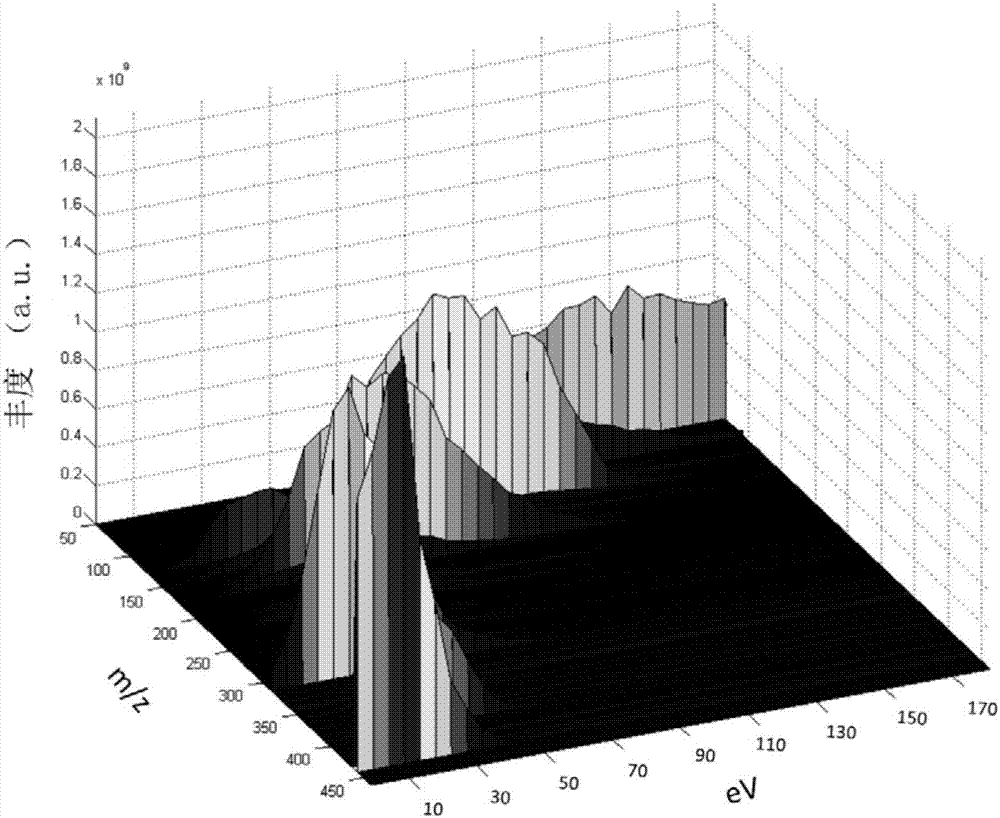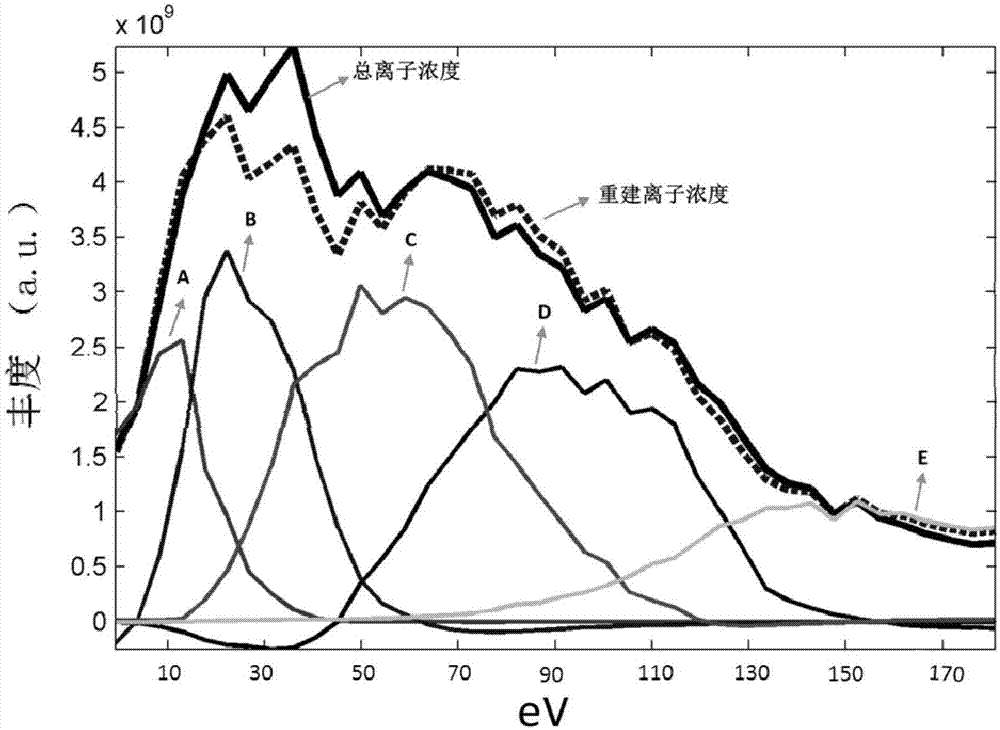Quick analysis method of chemical structure
A rapid analysis and chemical structure technology, applied in the field of chemical analysis, can solve problems such as increasing the difficulty of mass spectrum analysis, difficulty in analyzing unknown mass spectra, and small non-polar molecular weight of gas phase components
- Summary
- Abstract
- Description
- Claims
- Application Information
AI Technical Summary
Problems solved by technology
Method used
Image
Examples
Embodiment 1
[0076] Example 1: Rapid analysis of gas phase composition structure based on gas phase mass spectrometer
[0077] On an Agilent (Agilent) GC-CI-Q-TOF-MS instrument, the capillary chromatographic column used for separation in the GC instrument is detached from the GC, and then connected to a short capillary with no separation efficiency of only 3 meters long, And connect one end of the capillary to a 2ml sealed sample bottle (containing a liquid sample), and keep the capillary above the liquid level of the sample. The other end of the capillary is connected to the mass spectrometer. The vial and capillary are housed in the capillary lumen of the chromatograph. Set the temperature program of the GC, for example, from 2°C per minute, from 30°C to 200°C; and start mass spectrometry.
[0078] Using the temperature-raising program of the GC, the temperature of the liquid sample is slowly raised, and at the same time, the gasified sample is directly sucked into the mass spectromete...
Embodiment 2
[0081] Example 2: Rapid analysis of component structure based on liquid phase mass spectrometer
[0082] In this experiment, Thermo Fisher LC-Quadrupole-Orbitrap-MS was used. Dissolve an unknown substance in methanol solution to make a 10ug / mL solution, and put it into a bottle that usually contains solvents. The sample is slowly injected into the ESI source using a syringe pump. The injection rate is 0.1mL / min. The mass detection mode is ESI-.
[0083] Since the sample is slowly injected into the ESI source, it is possible to obtain MS 1 The mass spectrum of this MS 1 In the mass spectrogram, it can be concluded that the molecular ion of this unknown is m / z=440. For this MS 1 Choose different perturbation conditions to get a series of MS 2 peaks for analysis. On this instrument, select different CID energies (0 to 180eV) to obtain a series of MS 2 data. These MS 2 When the data are combined, a three-dimensional map can be obtained, that is, a two-dimensional mass sp...
Embodiment 3
[0091] Embodiment 3: Rapid analysis of component structure based on liquid phase mass spectrometer
[0092] On a Shimadzu LC-IT-TOF instrument, the liquid chromatography column used for separation in the LC instrument was short-circuited (by pass). Use the 10ug / mL solution prepared by dissolving the folic acid molecule in the previous example in methanol solution, and put it into a bottle that usually contains solvents, and pump it directly into the ESI source as the mobile phase without being separated, and the injection rate is 0.2mL / min. The mass detection mode is ESI-.
[0093] MS according to folic acid molecule 1 Molecular ion m / z / =440 is obtained in the spectrogram. On this instrument, the selected disturbance condition is the disturbance of the collision gas (collision gas) pressure: we set the collision gas pressure from 0 to 100%, with an interval of 0.5% continuous change, each change lasts 500 milliseconds, and finally a value containing 200 MS 2 The two-dimen...
PUM
 Login to View More
Login to View More Abstract
Description
Claims
Application Information
 Login to View More
Login to View More - R&D Engineer
- R&D Manager
- IP Professional
- Industry Leading Data Capabilities
- Powerful AI technology
- Patent DNA Extraction
Browse by: Latest US Patents, China's latest patents, Technical Efficacy Thesaurus, Application Domain, Technology Topic, Popular Technical Reports.
© 2024 PatSnap. All rights reserved.Legal|Privacy policy|Modern Slavery Act Transparency Statement|Sitemap|About US| Contact US: help@patsnap.com










